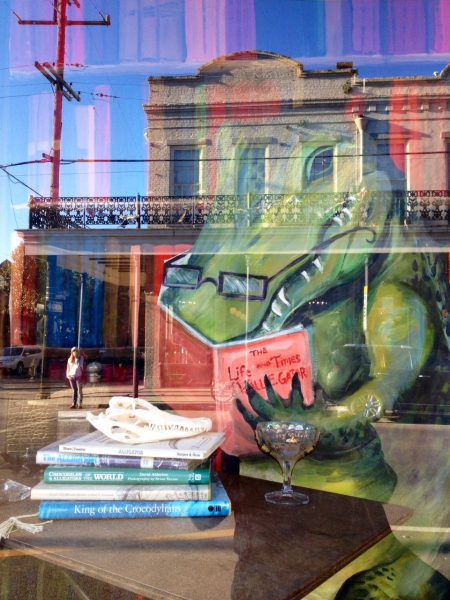In the first sentence, the words “most recent” seem to add another dimension, as if there have been many ex-lovers, as if she’s had a desire for children for a while. Would you please talk about those two words?
I’m really glad to hear you picked up on that cue. One of my favorite aspects of both writing and reading flash fiction is the sense of urgency. There is only so much time. And because of the brevity with this piece I wanted to have it honed down to a precise moment, a precise glimpse that would both provide pleasure for the reader as well as rattle some sentiment. This is a tendency I have with many of my stories. However, with this piece, I still felt the urge to establish some depth and history without getting into backstory. In my mind, dropping the words “most recent” suggests a series of frustrations and similar occurrences and exposes a sliver of truth (just enough to dazzle, not blind) that hopefully piques interest. At the same time the reader is grounded in this particular instance. For me, I thought some information front-loaded like that would help with the move made in the end.
One of the thrilling things about this story is that, on first read, it starts off looking like it’s going one direction, but it actually goes someplace else, someplace deeper. And that surprise is lovely. On subsequent readings, the beginning makes perfect sense. What was your process of discovering the story?
You always hear warnings about being manipulative, or at least getting caught being manipulative. But I’m still under the belief that it is necessary to disarm my reader a little bit, at least with the kind of work I like to do. Front-loading a piece with a bit of humor or quirk makes me feel like I’m there beckoning them with a waving hand, coaxing them into my world. And because of the initial impression made from the start there is an expectation of lightheartedness. I’m pretty sure Chekov said something about lulling your reader through the story so in the end you could punch them in the nose. I like that. I prefer to aim for a shot to the gut.
What was your initial inspiration for the story?
A lot of times stories start as images or phrases. Things that really gets stuck in my head, things I want to explore. But with this one, it felt like it was meant to be. There were some notes I had jotted down, some moves I wanted to try and pull off, a concept and a character I wanted to work with. The kindling was there, all the firewood was set. I just needed a little spark to get the blaze going. It all came together when I was invited to read for an art exhibit opening at a local gallery, the 410 Project in Mankato, Minnesota. They had a bike theme going on and I knew I had been playing around with some material that would work well for the event. That invitation and the added pressure really helped me to drive this one home and get it polished. So a big thanks goes out to them.
I really love how rich the sensory detail is throughout, how real it all feels, as if the “I” of the story is really me. There’s an honesty about this narrator in what she does and doesn’t do. The way she says for the second time, “You ride your bike too much.” The way she doesn’t go into their room as he packs. The way she watches him ride away. The way she describes the light bulb in the shed, “It clicked on then buzzed, filling the garage with a soft, egg-yolk glow.” You created an intimacy with this narrator that makes her real. How did you create this character?
With the initial concept of the story she was a response to a dickless/impotent lover. But she rattled around in my brain for a good while, something like how a cotton candy machine works: the longer she swirled around the bigger the character got. And as I worked through the story I found that she held the map to the pearl. I think that may be where the intimacy you mentioned originates. The heart of this story hid in her. Once I started digging, once I started letting her react to things, once she started burying her own emotions with passivity, some strong images jarred loose and then a certain authenticity was born. To me, the real key for a piece of flash to be a success, or any story for that matter, is what lingers after the reading is done, what resonates. That is a sign of a strong interaction between author and reader.
What’s next for your writing? What are you working on?
I’m drafting a novel about golfing and drug mules. Also, I’m adding the finishing touches on a chapbook and short story collection. But I always enjoy writing flash. I’ll keep grinding those out too.



 The SmokeLong Grand Micro Contest (The Mikey) is now an annual competition celebrating and compensating the best micro fiction and nonfiction online.
The SmokeLong Grand Micro Contest (The Mikey) is now an annual competition celebrating and compensating the best micro fiction and nonfiction online.